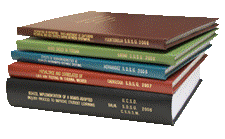Libraries, University of Nebraska-Lincoln

Archival Master’s Theses from the University of Nebraska-Lincoln
Date of this Version
6-1950
Document Type
Thesis
Citation
Thesis (M.S.)—University of Nebraska—Lincoln, 1950. Department of Agricultural Engineering.
Abstract
Data on the value of a topographic map for developing soil and water conservation practices on a farm is quite limited. Most information relating to the subject is based on opinion. Recommendations are more reliable if based on research information rather than on opinion. Therefore, the author proposed a study planned to determine the advantages and limitations of topographic mapping for planning terrace systems.
The purpose of this study was (1) to compare five terrace systems laid out in the field without the aid of a topographic map to five terrace systems of the same fields planned on topographic maps; and (2) to determine the minimum data required to design a good terrace system.
The first field work was started in April, 1949, and completed March, 1950. All of the five fields selected for this study were located within a 15 mile radius of Lincoln. Fields were selected to give a reasonable variety of conditions, such as uniform slope, flat hill tops, and some having watersheds separated by small waterways. The soils were developed, in general, on loess parent material. The predominating soil type was Sharpsburg silty clay loam.
The conclusion from this study is that topographic mapping preparatory to terrace planning seems economically feasible when improvements are considered, such as reduction in irregular area, reduction in length of terraces per acre, reduction in length of waterways, and increase in area protected.
Advisor: L. W. Hurlbut


Comments
Copyright 1950, the author. Used by permission.